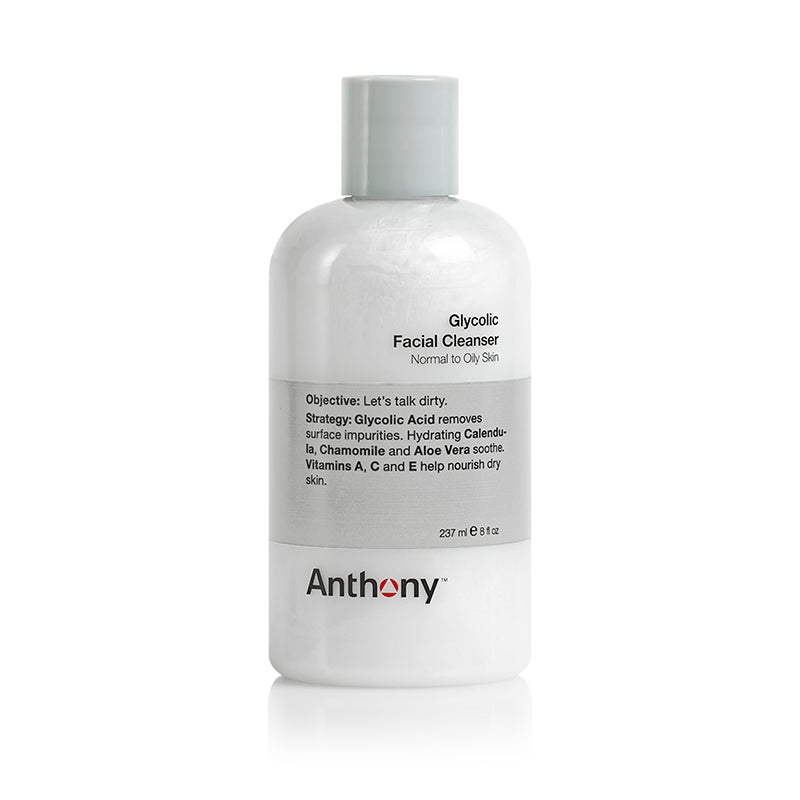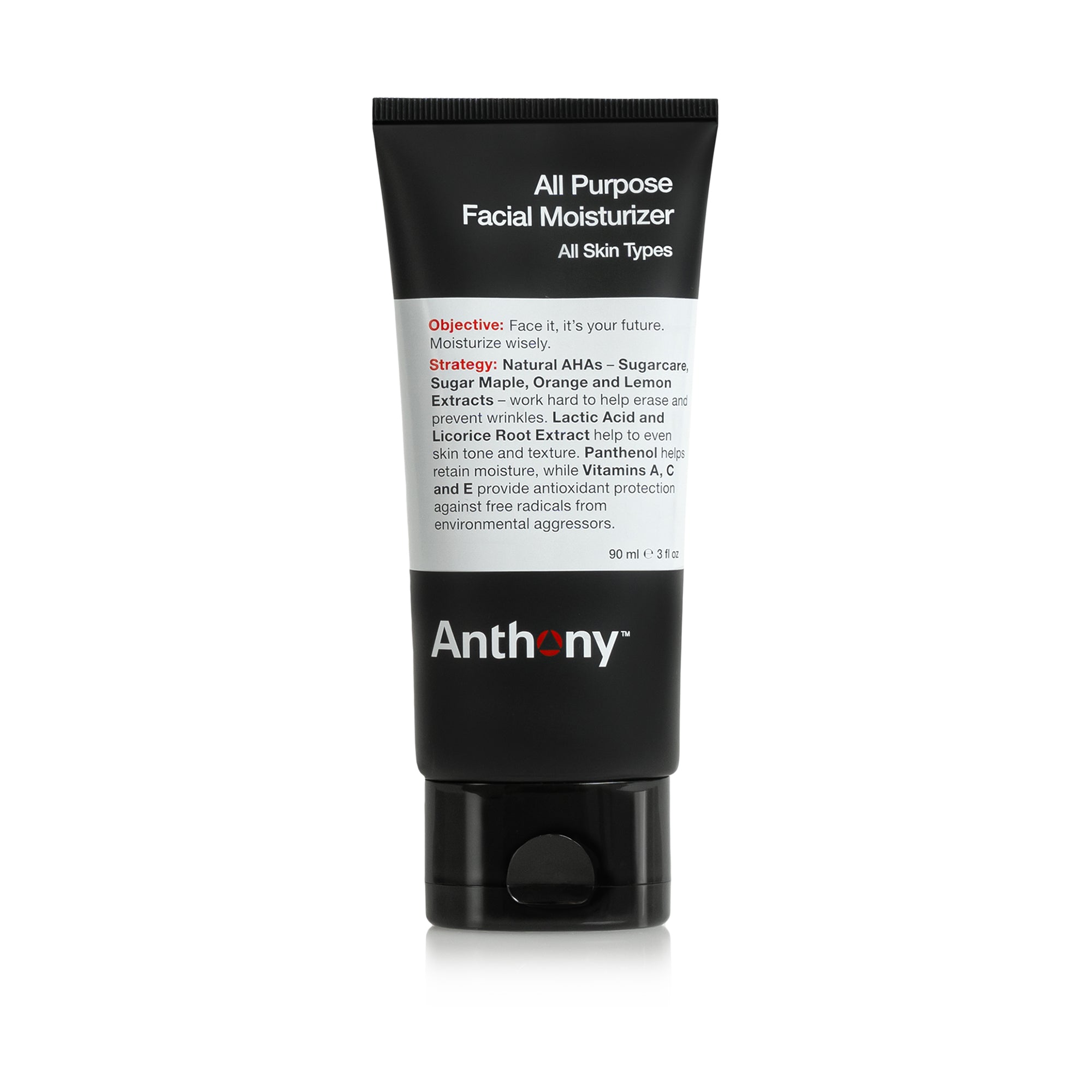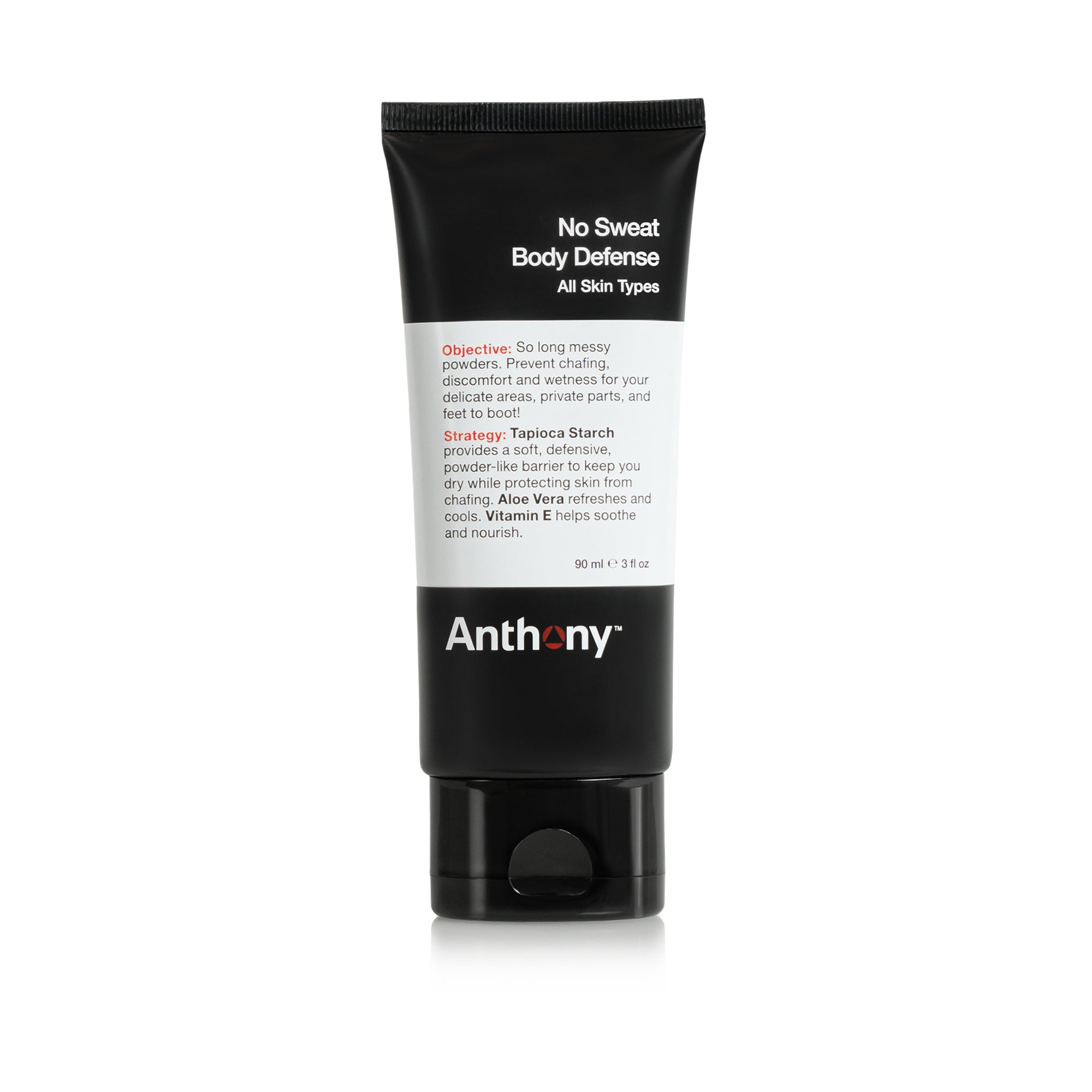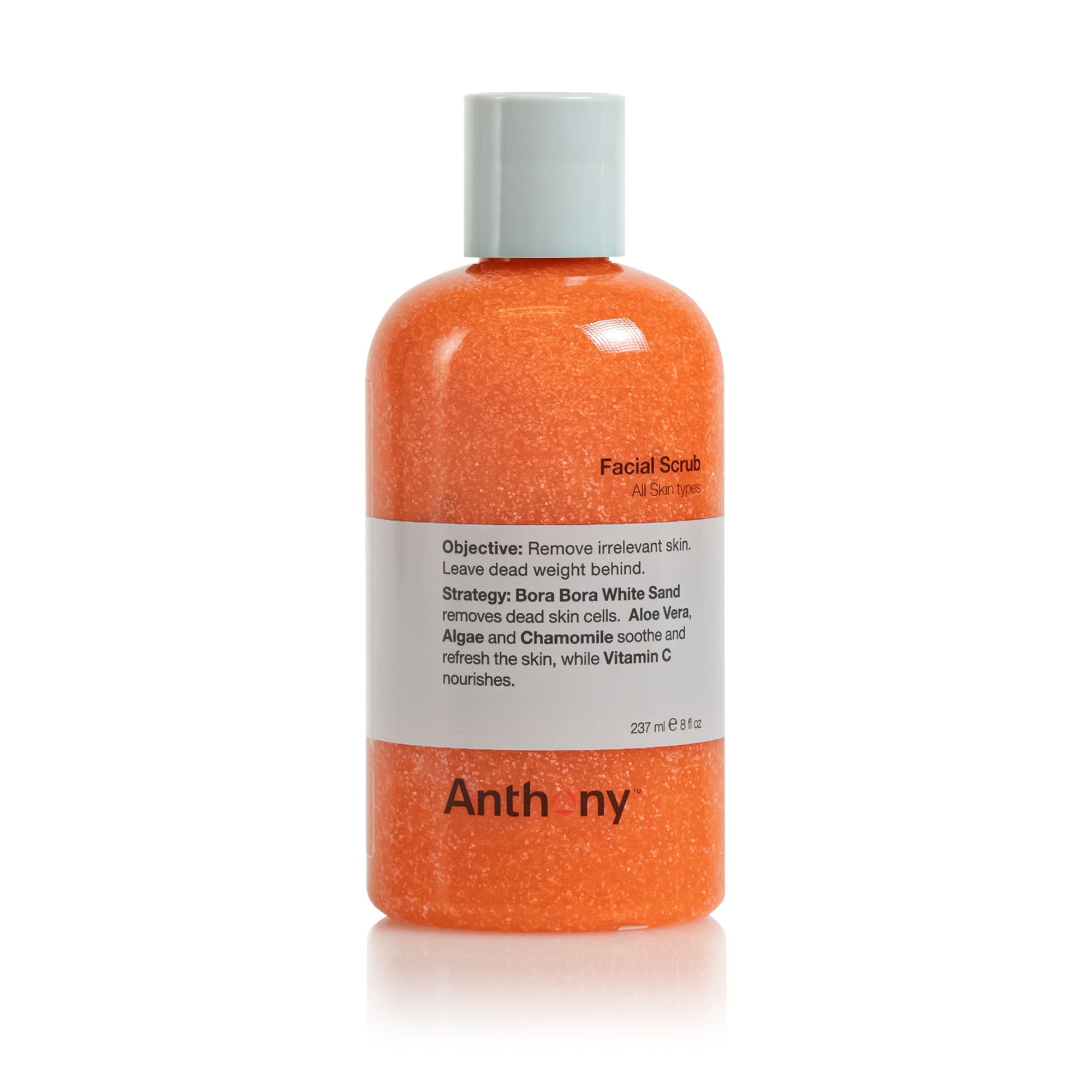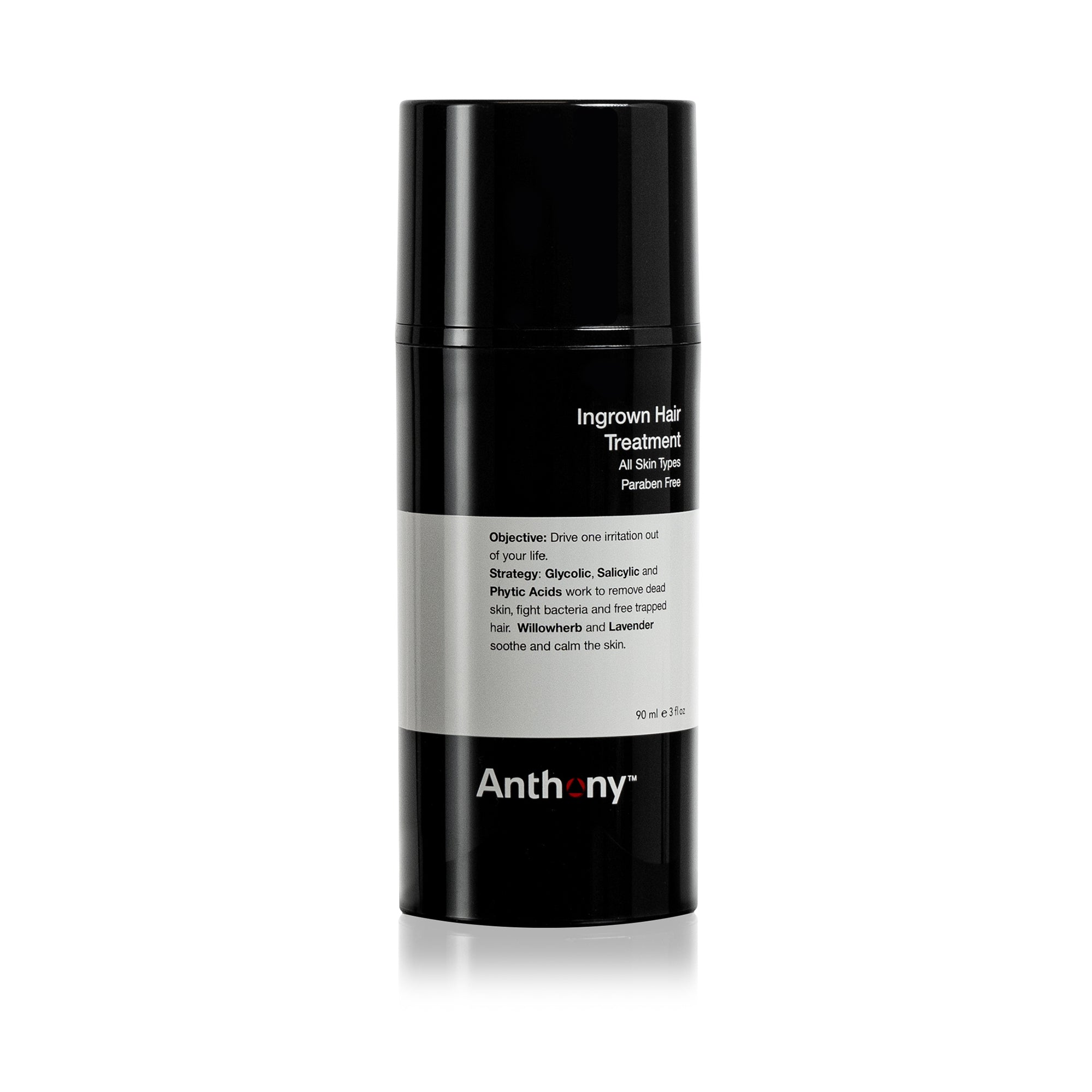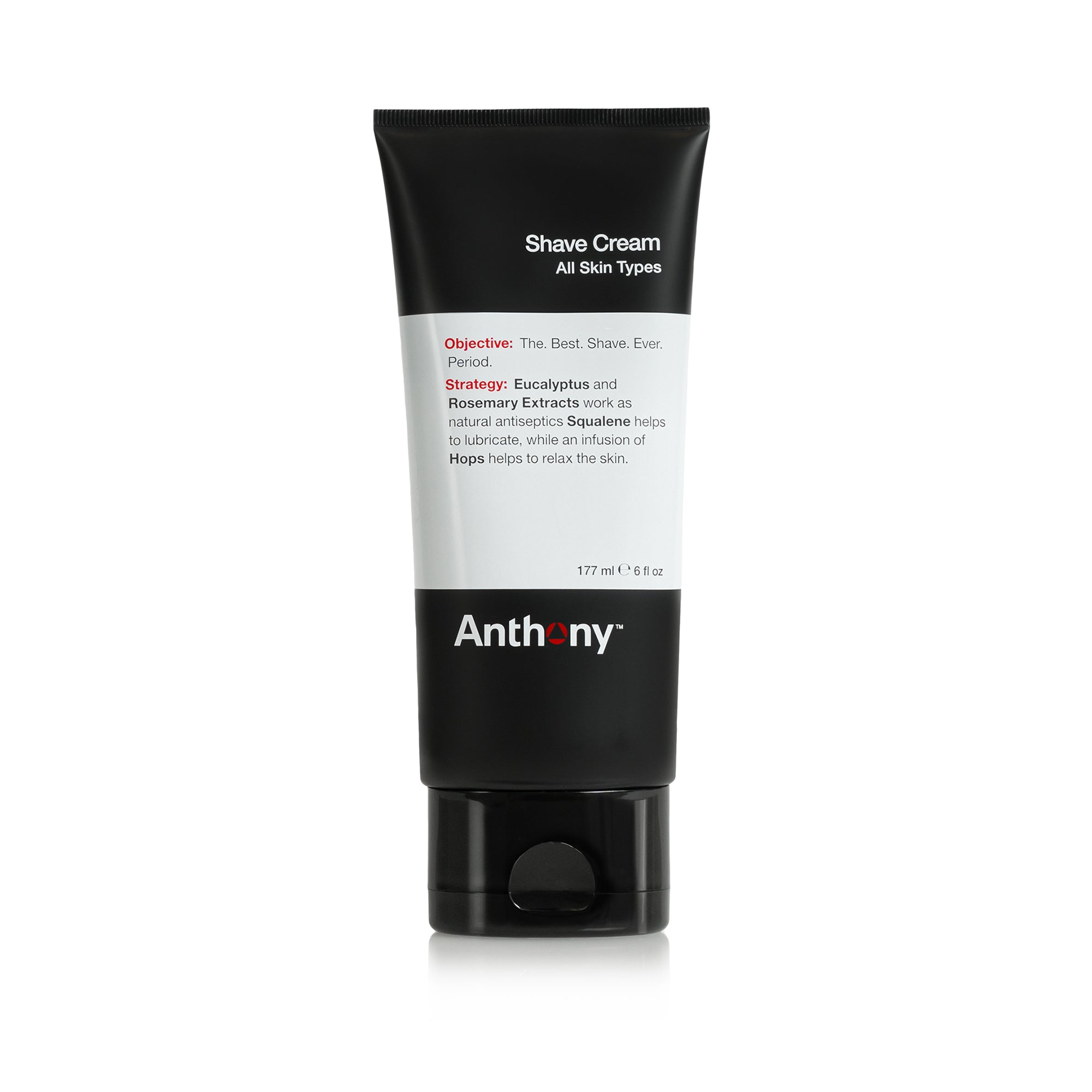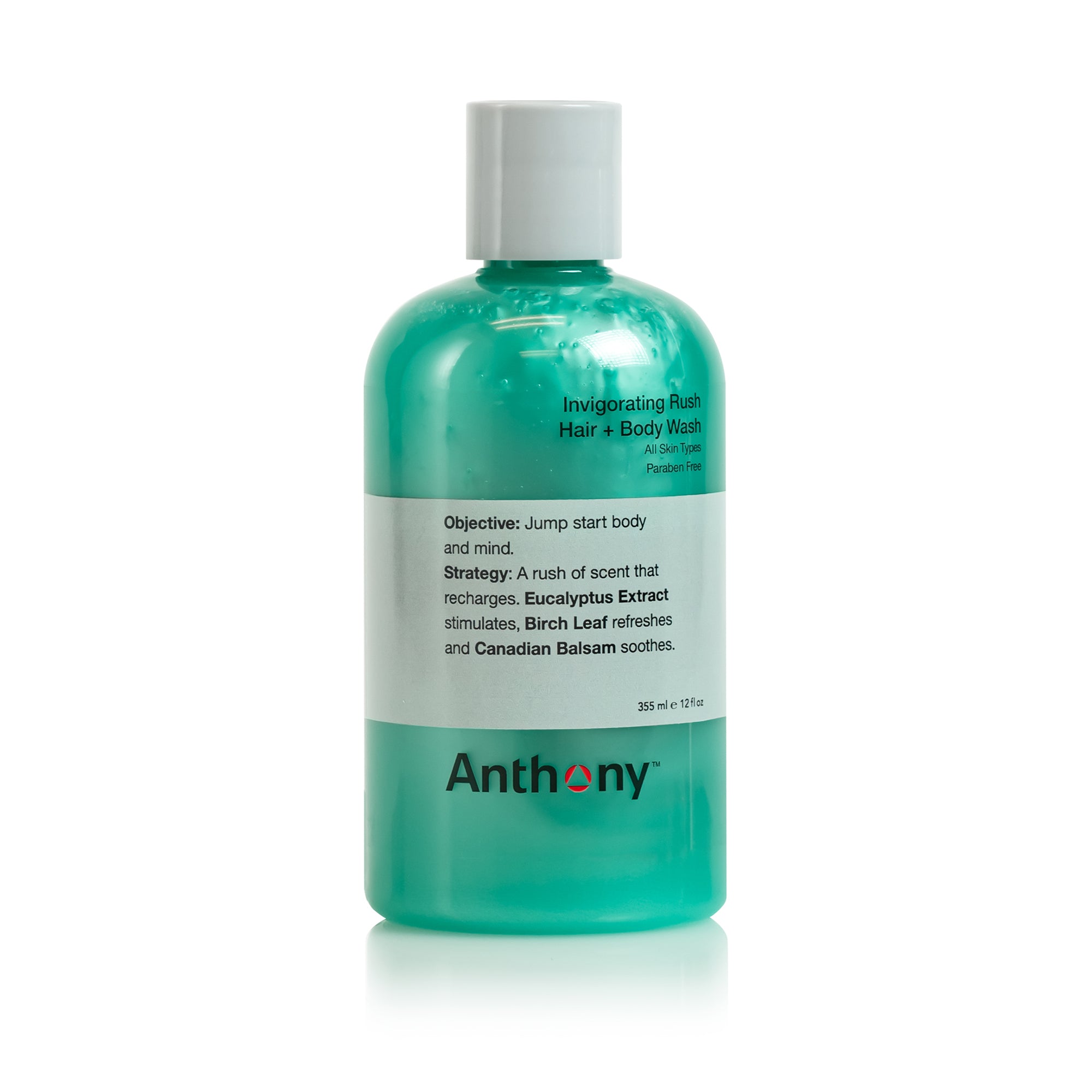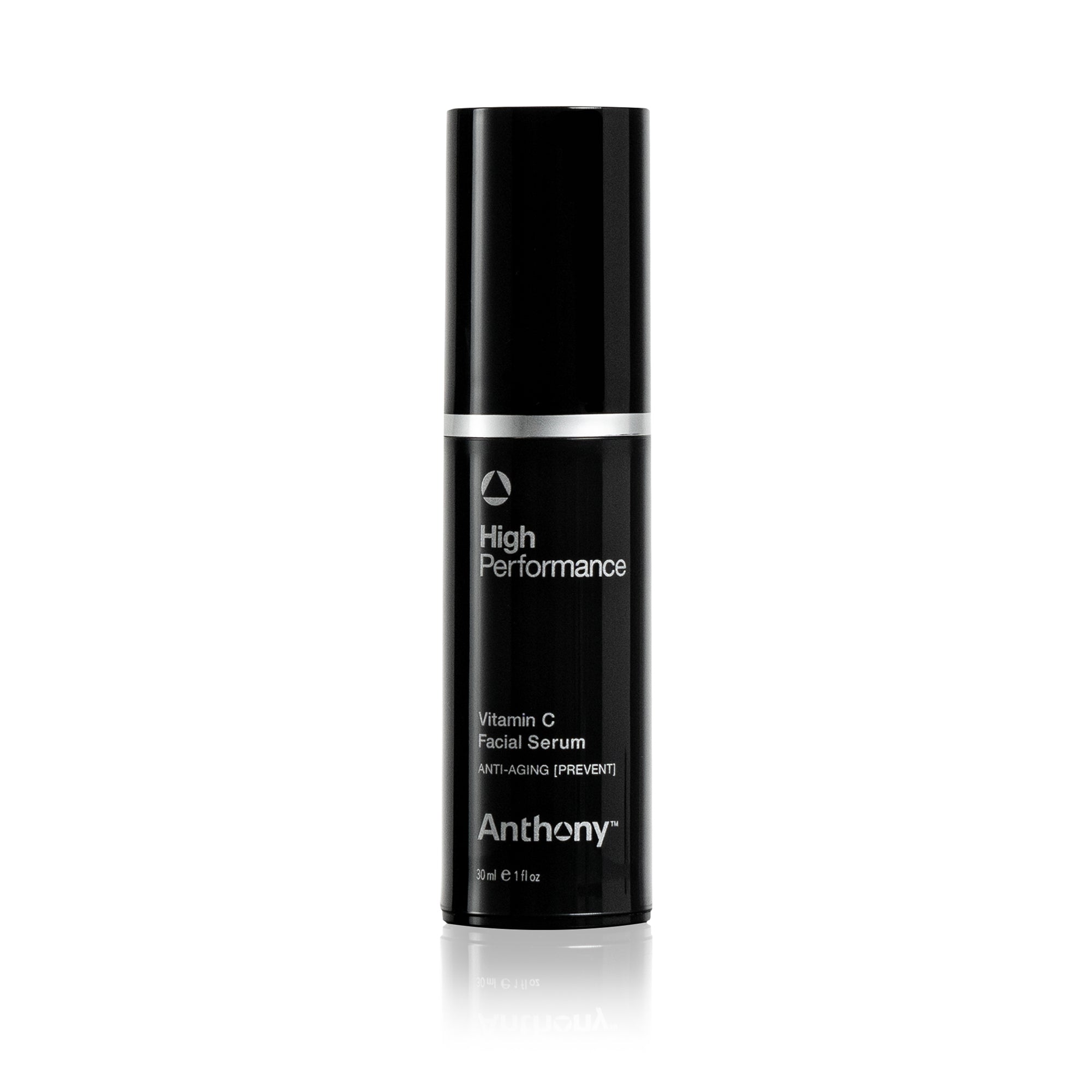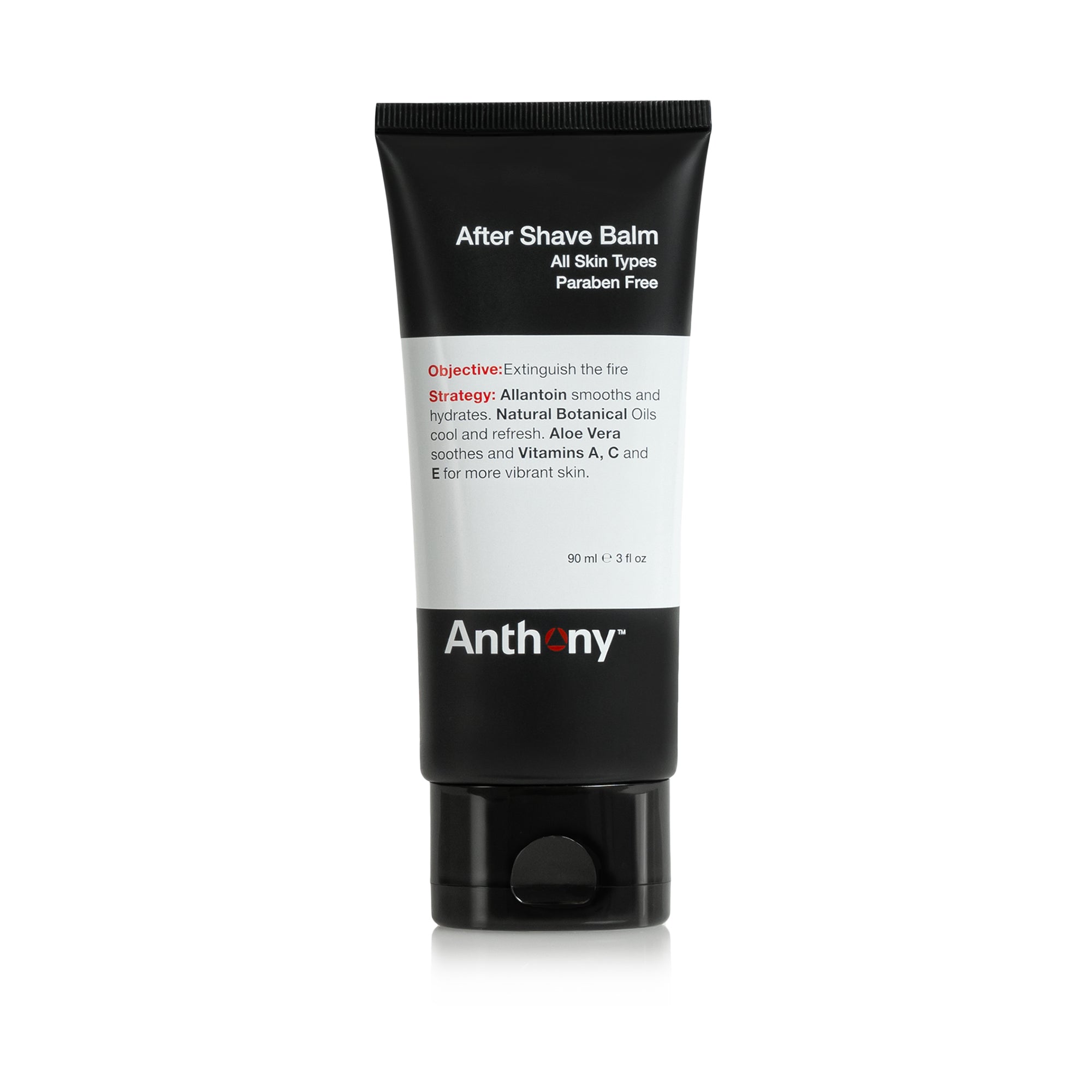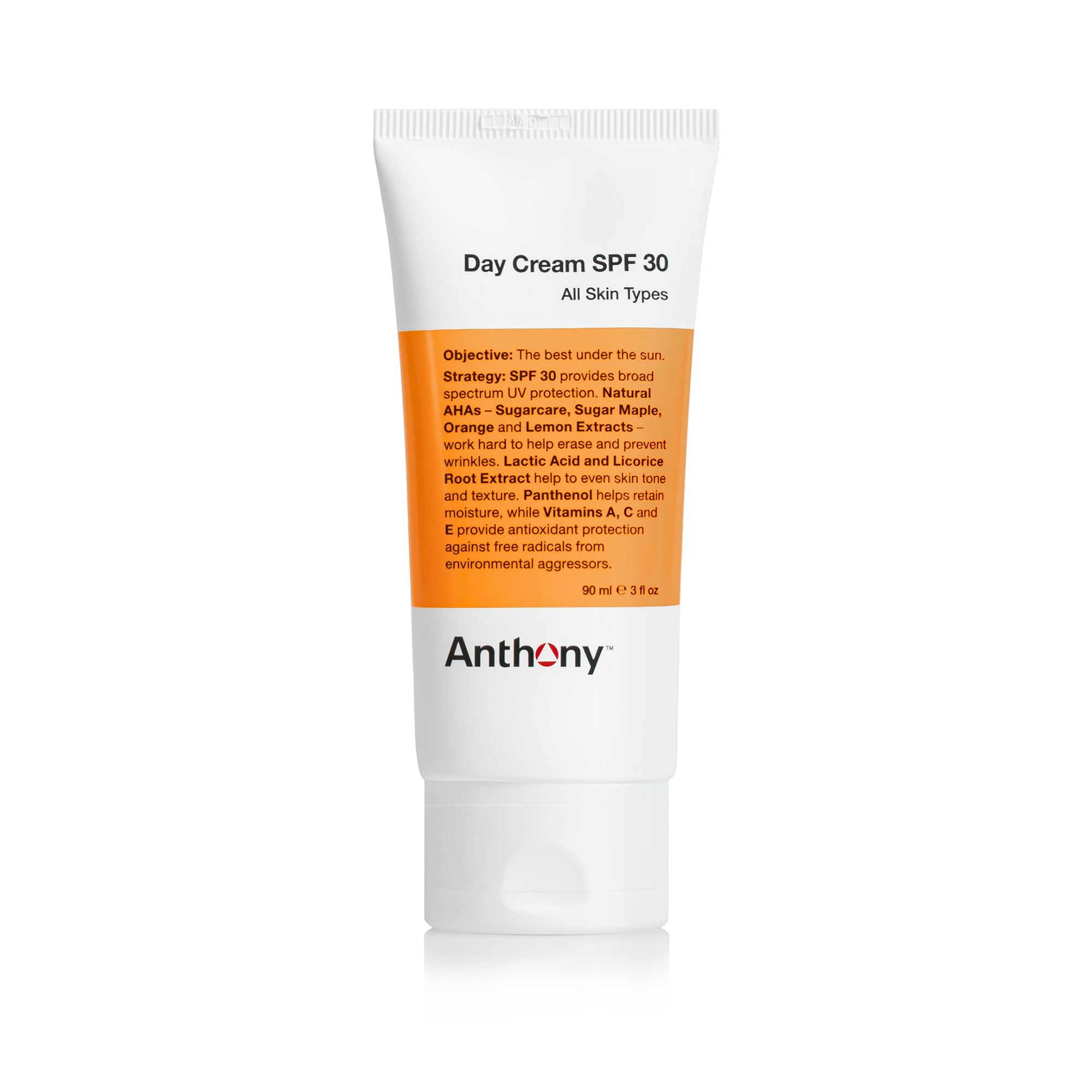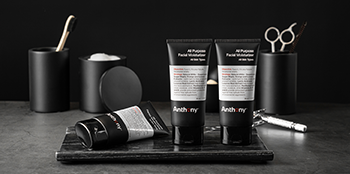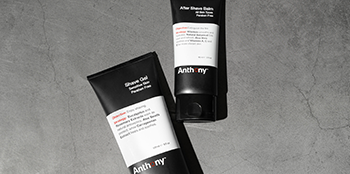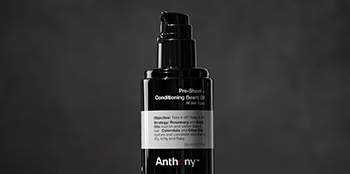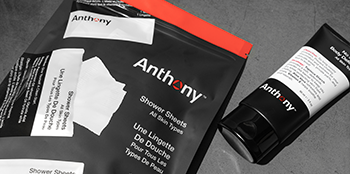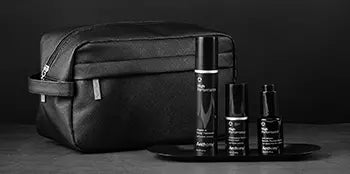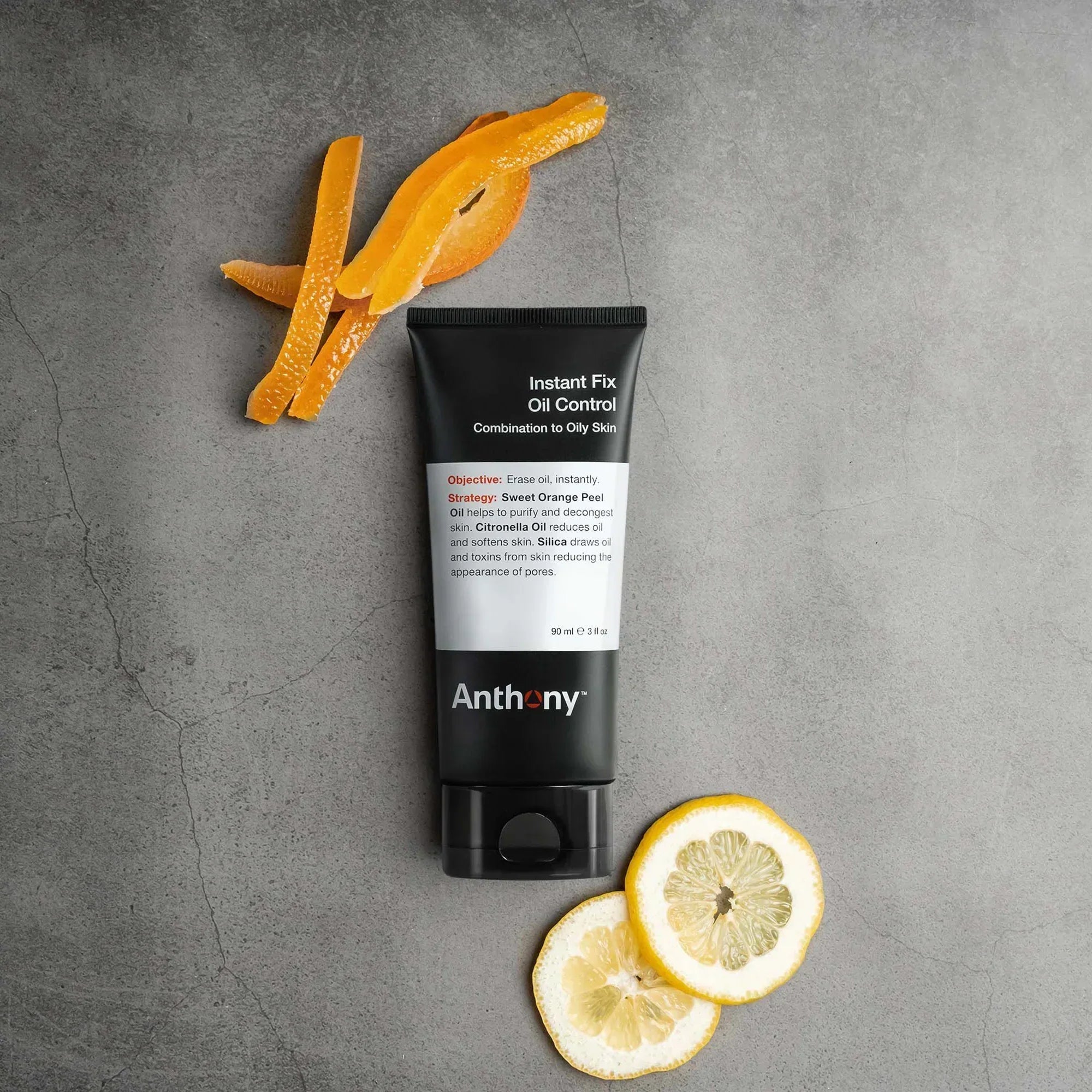
Knowing your skin type is the first step toward achieving a healthier, better-looking complexion. Men face a variety of skin-related issues — from acne to dry flakes — and if you simply want to improve your skin care routine, determining your skin type can help you choose the right products. At Anthony, we have products for every skin type under the sun, ensuring that you can find what you need. But before you go on a skin care shopping spree, continue reading to learn more about what type of skin you have.
What Are the Different Skin Types?
There are five primary skin types, each with its own characteristics:
Oily Skin
First, it’s important to distinguish oily skin from sweaty skin. Sweat is the body’s natural reaction to overheating, and some men are genetically predisposed to sweat more than others. If you sweat a lot, it can make the skin look shiny and even lead to breakouts, but it doesn’t necessarily mean you have oily skin.
Oily skin is characterized by an overproduction of sebum, the natural oil your skin produces. If you have oily skin, you may notice that your face looks shiny or greasy, especially in the T-zone (forehead, nose, and chin). Unlike the sweat you would have on a hot day, this excess oil is more prone to clogging pores, leading to acne breakouts, blackheads, and bigger pores.
Though oily skin can be frustrating, it does have one advantage: it tends to age more slowly than dry skin, as the extra moisture helps maintain skin elasticity. The key to managing oily skin is using lightweight, oil-free skin care products that control shine without stripping the skin of moisture.
Dry Skin
Dry skin lacks oil, causing it to feel tight, rough, or flaky. This skin type may appear dull and show fine lines more prominently (because of dehydration). Environmental factors such as cold weather, harsh cleansers, and long, hot showers can worsen dryness by stripping the skin of moisture.
If you have dry skin, you might also experience irritation or sensitivity, making it crucial to use gentle, hydrating products. Ingredients like hyaluronic acid, glycerin, and ceramides can help replenish moisture and restore the skin’s natural barrier. A rich, cream-based moisturizer and mild cleanser can help maintain hydration and prevent irritation.
Combination Skin
Combination skin is a mix of both oily and dry areas. Typically, people with this skin type experience excess oil in the T-zone while their cheeks remain dry or normal. This dual nature can make finding the right skin care routine more difficult, as products that work for one area might not work for another.
Seasonal changes, stress, and hormonal shifts can further affect combination skin, making it more oily or dry at different times. To care for combination skin, consider using a gentle cleanser, a lightweight moisturizer for oily areas, and a richer formula for drier spots. A balanced skin care routine can help maintain harmony between these contrasting areas.
Normal Skin
Normal skin is well-balanced, meaning it’s neither too oily nor too dry. Men with this skin type usually have small pores, a smooth texture, and minimal sensitivity. Normal skin rarely experiences breakouts or irritation and generally maintains an even tone.
However, even though normal skin isn’t prone to major issues, it still requires proper care to stay healthy. A simple routine of cleansing, moisturizing, exfoliating, and sun protection is necessary to maintain its natural glow. Using gentle, hydrating products with ingredients like antioxidants and hyaluronic acid can help keep the skin looking fresh and youthful.
Sensitive Skin
Sensitive skin tends to react easily to skin care products, changes in weather, and stress. This skin type can become red, itchy, or irritated when exposed to harsh ingredients, fragrances, or extreme temperatures. Unlike other skin types, sensitivity isn’t always linked to oil production but rather to the skin’s weakened protective barrier.
People with sensitive skin should choose fragrance-free products that soothe and protect the skin rather than irritate it. Ingredients like aloe vera and chamomile can help calm inflammation and strengthen the skin’s defense against external aggressors.
Why Does Skin Type Matter?
Knowing your skin type helps you avoid using products that may aggravate your skin, ensuring that you get the most out of your routine. Understanding your skin type will guide you toward the ingredients and products that can best serve your skin. Alternatively, misunderstanding your skin type and choosing the wrong products can lead to irritation, breakouts, or further skin concerns, so it’s important to get things right the first time.
3 Proven Methods to Determine What Skin Type You Have
Here are three simple, at-home methods to help you determine what skin type you have:
1. Bare-Faced Method
This method involves observing how your skin reacts after cleansing, so it’s a great way to understand how your skin behaves naturally.
- Step 1: Wash your face with a gentle cleanser.
- Step 2: Pat your face dry with a clean towel.
- Step 3: Wait for 30 minutes to allow your skin to return to its natural state.
- Step 4: Examine your skin. If it feels tight or looks flaky, you likely have dry skin. If it appears shiny all over, you probably have oily skin. If only your T-zone looks shiny while the rest of your face is dry, you have combination skin. If your face feels hydrated and comfortable, you have normal skin.
2. Blotting Sheet Method
The blotting sheet method is quick and effective for gauging how much oil your skin is producing.
- Step 1: Cleanse your face and gently pat it dry.
- Step 2: Wait for 30 minutes, then press a blotting sheet on different areas of your face.
- Step 3: Hold the sheets up to the light to see the oil markings. If they absorb a lot of oil from all areas of your face, you likely have oily skin. If they absorb little to no oil, you have dry skin. If only the T-zone is oily, it indicates combination skin. If minimal oil is absorbed from all areas, you likely have normal skin.
3. Take an Online Skin Test
Still not sure what type of skin you have? Try out Anthony’s online skin care quiz! It’s only five questions and will give you personalized recommendations based on your answers. While this is a quick and easy way to learn more about your skin (and how to improve it), don’t be afraid to reach out to a professional. If you feel that you have skin that’s sensitive or doesn’t react well to most skin care products, be sure to consult a dermatologist for a professional recommendation.
Get the Products for the Type of Skin You Have at Anthony
Once you’ve determined your skin type, you can tailor your skin care routine with the right products. At Anthony, we offer skin care solutions designed for each skin type, helping men achieve healthy, clear, and smooth skin. Here are some of our top products for each skin type:
- Oily Skin: Purifying Astringent Pads, Instant Fix Oil Control, Oil Free Facial Lotion, Oil Control Duo
- Dry Skin: Facial Scrub, Algae Facial Cleanser, All Purpose Facial Moisturizer
- Combination Skin: Facial Scrub, All Purpose Facial Moisturizer
- Normal Skin: Facial Scrub, Glycolic Facial Cleanser, All Purpose Facial Moisturizer
- Sensitive Skin: Glycolic Facial Cleanser, All Purpose Facial Moisturizer, Facial Skin Duo
Want to learn even more about how to determine your skin type? If so, be sure to check out the great products and solutions available at Anthony today!

